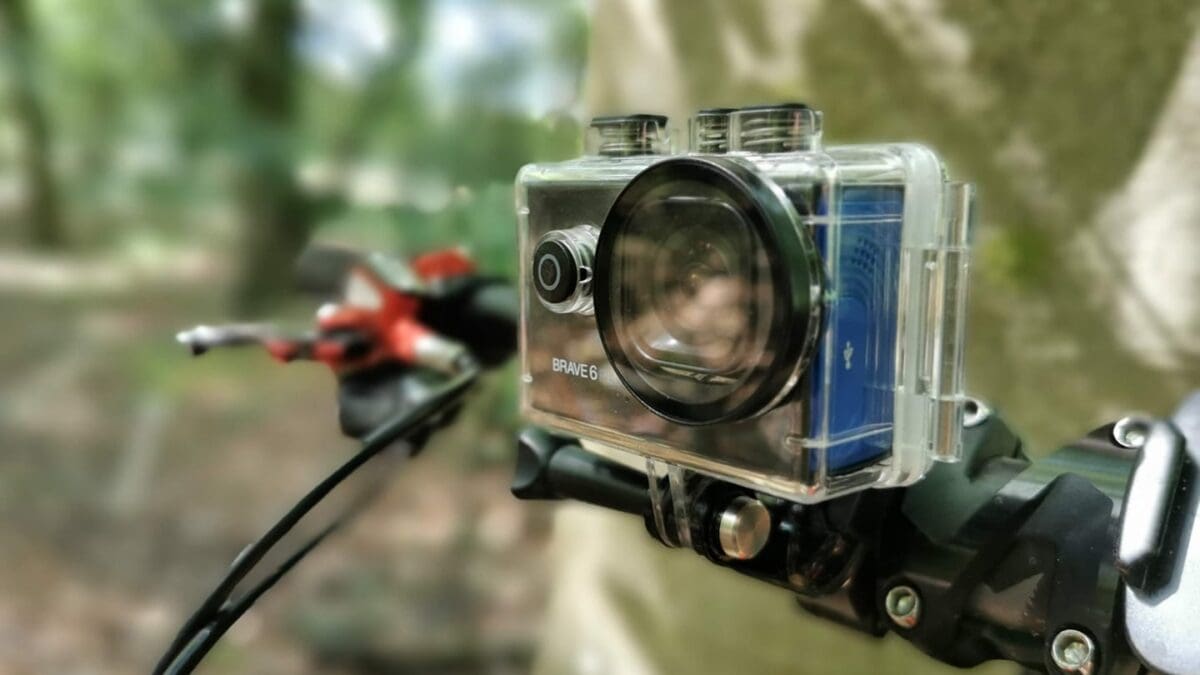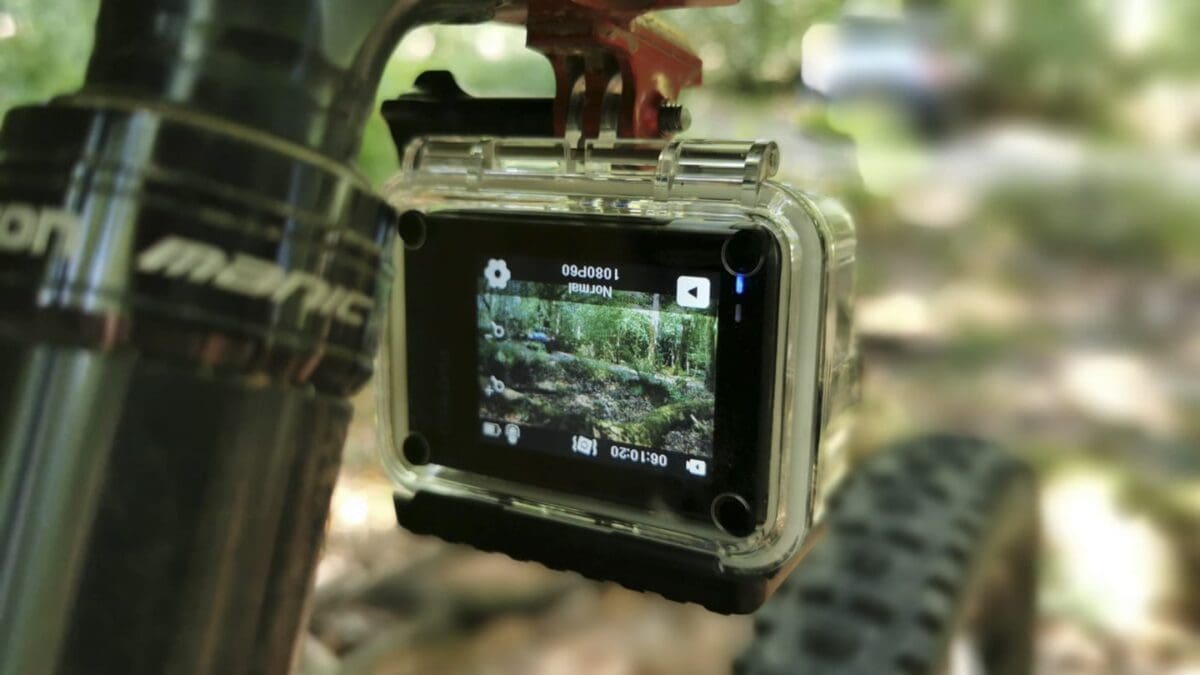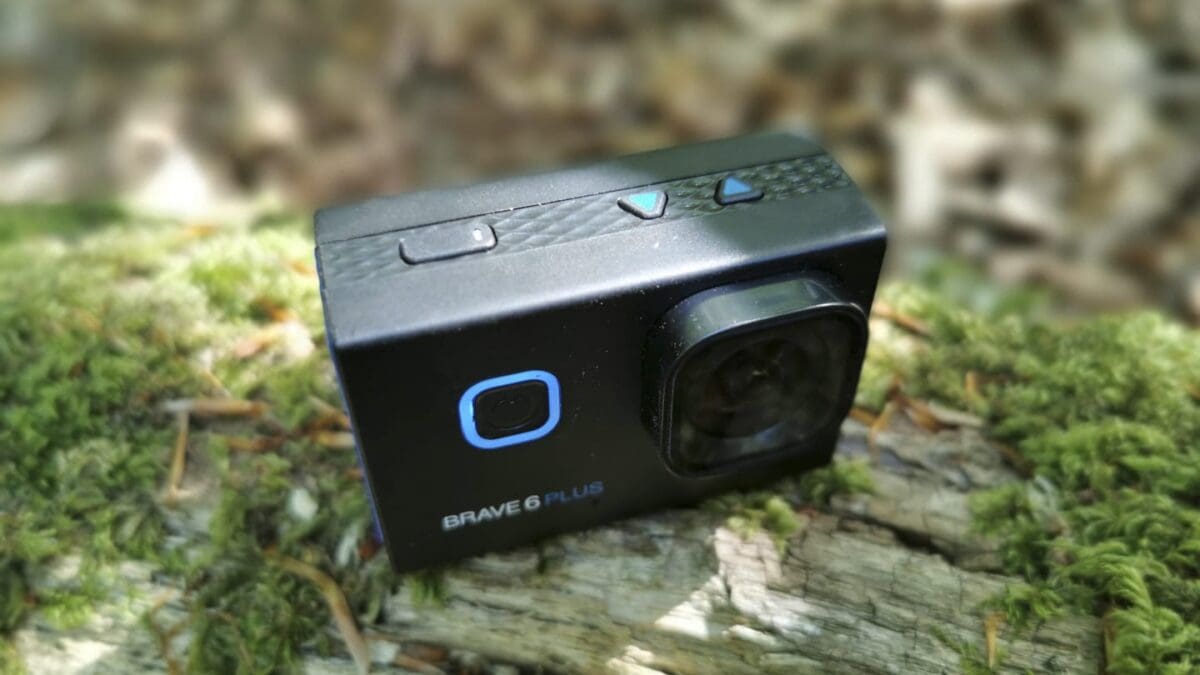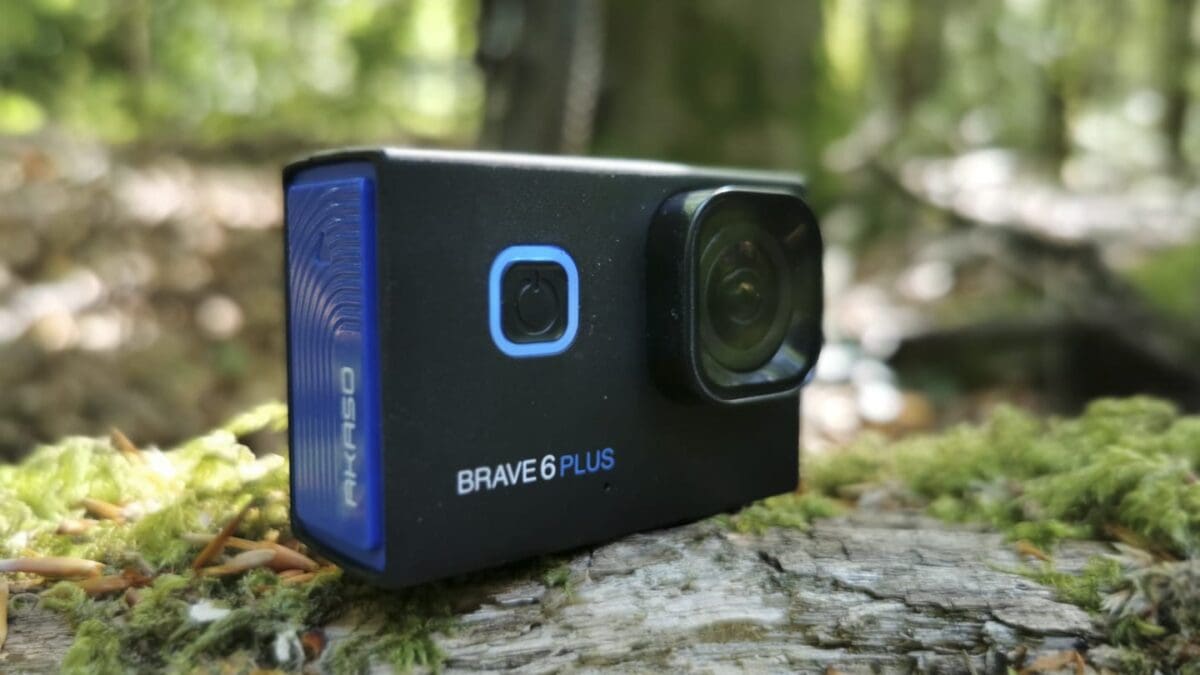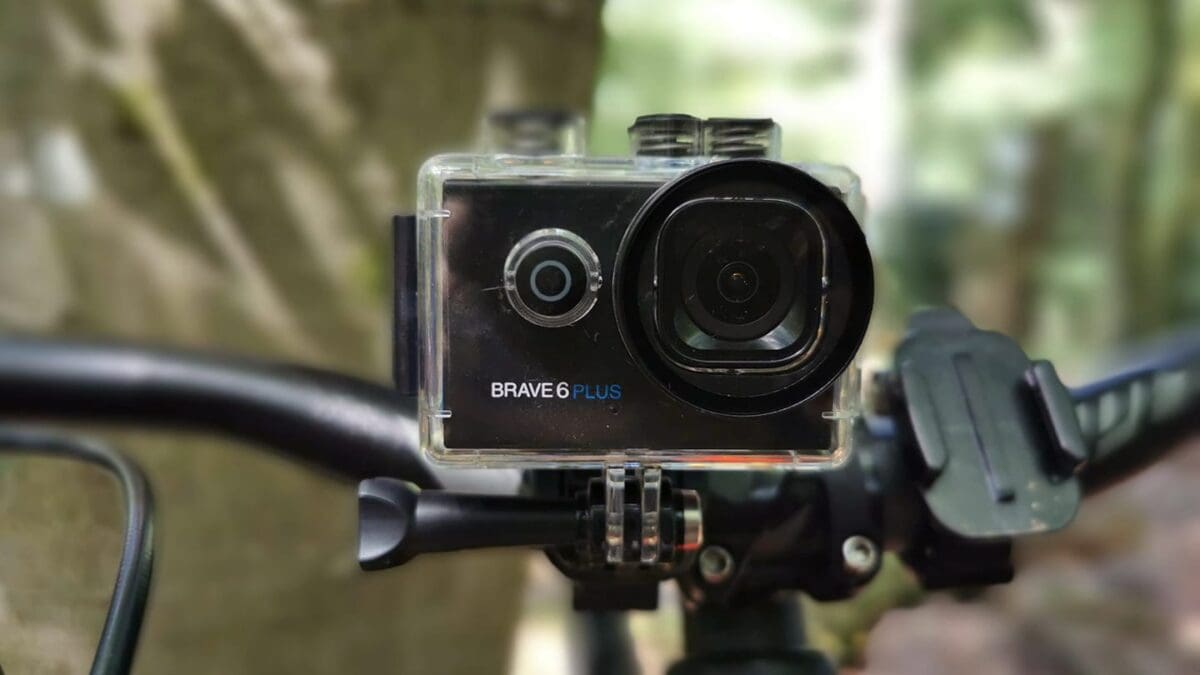Despite the high-quality packaging, the action camera is very definitely a budget model. It’s all well-built, but the plastic has that slightly cheap feel and look.
While the build might feel cheap, the camera is well put together, and attention to detail has been paid to the design.
The battery door as an example is sprung and reinforced, and while the buttons on top are small, they are responsive.
The build of the camera itself is better than many other budget action cameras of this price, despite the slightly plastic looks.
Looking at the waterproof housing and again this all seems to be in order, relatively well built, strong and secure. It also features a side opening door which is less common than the bottom opening doors I usually see.
One issue that is apparent from the outset is that the contact of the waterproof housing buttons and the cameras aren’t that good. Starting and stopping recording requires quite a forceful push.
You can, of course, use your voice or the app to start recording but it’s not ideal.
Overall the build and handling of the action camera are very good; it’s just the quality of the waterproof case that lets it down.
<h2>Performance</h2>
Used out of the case, and the camera is responsive and easy to use. On the main screen, I like the way you can swipe left or right to change shooting modes, swipe down to switch on of off wifi, voice, lock and to power down. Then swipe up to access a variety of different functions and features through the main settings menu.
Using the app is equally easy, and again there’s that real ease of use which makes the camera very intuitive.
However, with no mount or thread under the camera, you need to place it into the housing to mount it or attach a selfie stick.
Once in the case, using the buttons to navigate and operate the camera is difficult, and here the app comes into play. I found it easier to operate the camera through the app than directly through the case.
On to the video quality and it’s a real mix. At 4K, 30fps the quality of the footage is excellent; full of detail and tone and great for vlogging, filming the family and general video.
If you mount the camera and try to film action, say a bike ride, at 4K, 30fps that framerate is to slow, and the footage is jerky. While the camera can shoot 4K, the 4K should be reserved for non-action sequences.
One feature that can be switched on for all resolution and framerates is the EIS. On some cameras, this will haul the 4K, 30fps into usable visual quality. Here while it helps when the camera is handheld, put some speed into the action, and again the footage is just too jerky to use at any quality.
For handheld footage, the EIS does its job with some effect of stabilisation to the footage. The EIS, however, does seem pretty primitive, and there is quite a bit of warping that goes on, you’ll also notice the quality of the footage drop slightly.
Dropping the resolution down to 1080p, 30fps and the quality of the footage drops slightly but is still good for the general video. However, increase the framerate to 60fps, and the quality of the footage deteriorates rapidly.
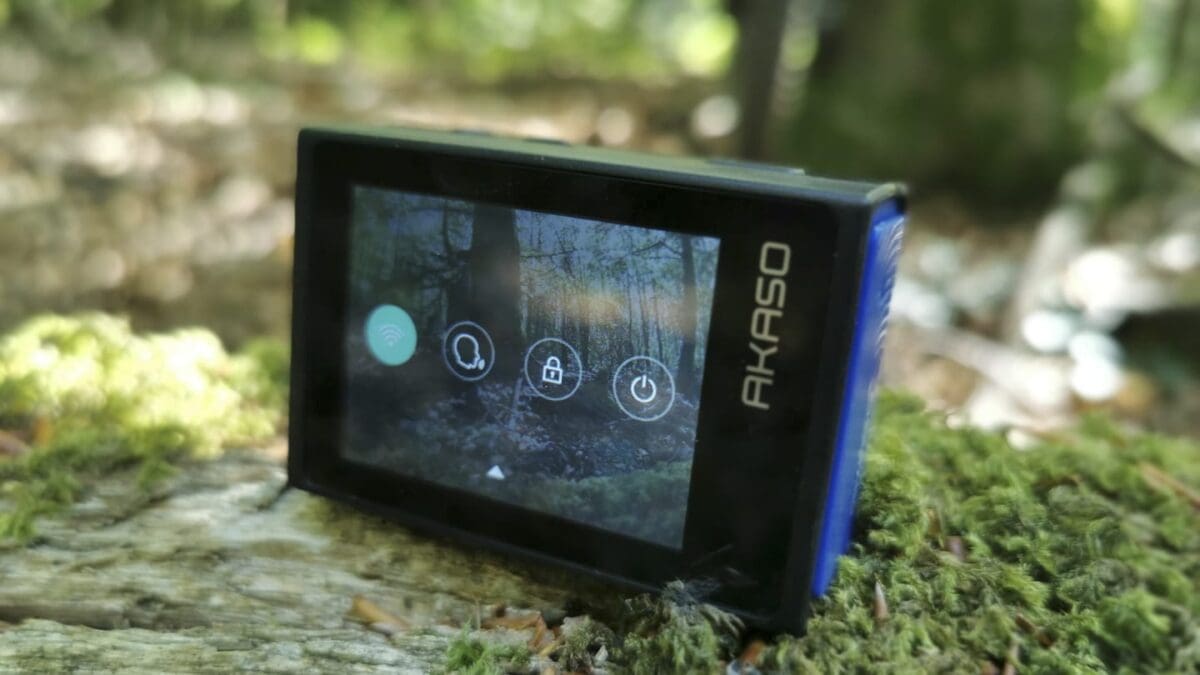
Shooting action sequences shows much of the detail is lost and a real visual pixelation of the footage.
As the light levels drop the quality of the footage drops further and becomes unusable.
Pushing the framerate to 90fps and the quality is equally terrible.

